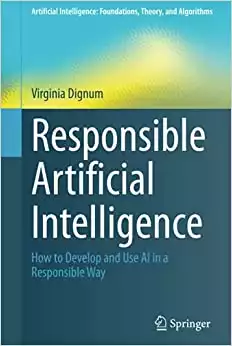Introduction
You’ve probably been hearing a lot about artificial intelligence (AI) lately and are wondering what the fuss is about. Despite the Hollywood portrayals of robots taking over the world, AI is nothing new – it’s been around for decades in one form or another.
It’s hard to believe that something as complex as artificial intelligence is becoming commonplace in our daily lives, but it’s true. AI has already been integrated into a number of devices and applications that we use on a daily basis.
This article will discuss the best examples of AI in everyday life around us. The following industries, in particular, can benefit greatly from the increased efficiency, accuracy, and productivity that AI offers.
Table of contents
Also Read: Artificial Intelligence (AI) and Policing.
1. Navigation Apps
First on the list is one of the oldest and most commonly used applications of AI – navigation apps. GPS apps like Waze and Google Maps have been using AI for years to provide users with the best possible route to their destination, taking into account factors like traffic, construction, and weather.
These apps use a process called routing, which involves finding the shortest or fastest path between two points. AI has made this process much more efficient and accurate, allowing navigation apps to provide users with real-time updates and alternative routes when necessary.
There are also newer features like destination anticipation, which enables navigation apps to learn your patterns and predict where you’re going even before inputting a destination.
Google Live View is also a poignant example of how we can use AI in navigation. This new feature uses an A.I and augmented reality (AR) to provide turn-by-turn directions directly on your phone’s camera view, making it even easier to find your way around unfamiliar places.
2. Rideshare Apps
The rise of navigation apps gave birth to an entirely new industry – rideshare apps. Individuals with no prior experience or training can now use their personal vehicles to give others rides, thanks to the GPS capabilities of these apps.
Rideshare apps like Uber and Lyft have become increasingly popular in recent years, and AI has played a big role in their success. From matching riders with nearby drivers to automatically calculating fares, AI is used throughout the process to make it as seamless and efficient as possible.
Rideshare apps are also using AI to improve safety. Uber, for example, has developed a feature called RideCheck that uses sensors and GPS data to detect irregularities like long stops or unexpected route deviations. If something does happen, riders and drivers will be notified and can contact Uber’s safety line for assistance.
Machine learning is also being used to improve the accuracy of ETAs and detect fraud and abuse. As rideshare apps continue to evolve, we can expect to see even more AI-powered features that make the experience safer, smoother, and more enjoyable for everyone involved.
3. Short Videos & Video Summaries
Who remembers Vine? The short-form video app was all the rage a few years ago, but it eventually fizzled out due to a lack of innovation. Years later, all the big players are turning their attention to the short-form video, including TikTok, Youtube Shorts, Instagram Reels, and Snapchat.
Much like navigation apps, short-form videos are nothing new. What is new, however, is the way that AI is being used to create them. First, there’s the almighty machine learning algorithm. AI is used to personalize the content you see on your feed, ensuring that you’re always seeing the most relevant videos.
But AI doesn’t stop there. Deep learning technology is also being used to summarize entire videos in a fraction of the time it would take to watch them, making it easier to consume large amounts of content. This is especially useful for those who don’t have the time to watch an entire video but still want to be up-to-date on the latest trends.
Google’s Video A.I is capable of object recognition for over 20,000 places, things, and actions, allowing it to provide accurate descriptions of videos. Facebook and Youtube are also using AI to create automatic video subtitles in over 70 languages, a less-impressive yet equally important feature.
4. Video games
The most exciting and ‘game’-changing examples of AI are in video games. From realistic graphics to believable character interactions, AI-based software is slowly but surely revolutionizing the gaming industry.
One of the most impressive examples of AI in video games is in the 2020 release of Cyberpunk 2077. The game features an AI system called the Digital Human Engine, or meta humans, which was used to create realistic human characters in Unreal Engine. This system analyzes a huge amount of data, including over 100 facial muscle movements, to create digital characters virtually indistinguishable from real people.
Role-playing games like Cyberpunk 2077 are not the only ones benefiting from AI First-person shooters like Call of Duty and Halo use A. I to create enemy characters that are more challenging and intelligent than ever before. NPCs are infamous for being mindlessly easy to defeat, but AI is changing that.
Enemy characters can now take cover, flank you, and use coordination tactics to try and take you down. Sports games are following suit, with NBA’s 2K and EA’s Madden using AI to create more realistic player movements.
And it’s not just the big studios that are making use of AI! Indie developers are also using game engines like Unity to create impressive racing games with relatively small teams.
Also Read: Video Games With the Most Impressive AI
5. 3D Photography
3D photography is a form of art that is slowly but surely gaining popularity. Unlike traditional photography, 3D photos give the viewer a sense of depth and dimension, making them feel as if they are right there in the scene. The concept is taking one or multiple 2D photos and adding a third dimension, either by using special equipment or by post-processing the image with artificial intelligence software.
AI plays a significant role in 3D photography, both in the capture and processing stages. For example, the Google Pixel 4a features a dual-camera setup that allows you to take 3D photos without any extra equipment.
But post-processing is where things get really interesting. AI can be used to automatically generate 3D models from 2D images, a process that would otherwise be incredibly time-consuming and require expert knowledge.
There are already a few companies offering this service, including NVIDIA. They use neural radiance fields (NeRF) to generate 3D models from 2D images, and the results are truly impressive. A common example of this you’ve probably seen before is 3D e-commerce product photos, where you can view the product from multiple angles by moving your mouse around the image.
3D photography is still in its early days, but with the help of AI, it has the potential to revolutionize the way we interact with images online.
6. Facial Recognition
This industry has been highly controversial recently, with many privacy concerns being raised. But facial recognition is only getting more accurate and widespread, so it’s important to understand how it works.
Facial recognition technology relies on artificial intelligence to identify individuals by their physical characteristics. This can be used for various purposes, including security and surveillance, identity verification, and even marketing.
One of the most common examples of facial recognition is on social media platforms. Facebook, for example, uses facial recognition to suggest tags for photos. The technology can also be used to unlock your phone, as many smartphones now have this feature built-in.
Law enforcement agencies also use facial recognition to identify criminals and missing persons. The technology is far from perfect, but it is constantly improving. Companies like Clearview AI are selling facial recognition software to law enforcement agencies, and the FBI and ICE are already using it.
While this might seem like a good thing, in theory, Clearview AI is collecting data from millions of people without their consent. This raises serious concerns about privacy and the misuse of this technology. The company recently received a £7.3M fine from the UK watchdogs and was ordered to delete all UK data.
7. Smart Assistants
Smart assistants are becoming increasingly popular, with Amazon’s Alexa and Google Assistant being the most widely used. These assistants use artificial intelligence to perform tasks such as setting alarms, playing music, and adding items to your shopping list.
This technology is constantly evolving and becoming more sophisticated. For example, Alexa can now understand natural language and respond accordingly. This takes speech recognition one step further, as you can converse with her rather than just issuing commands.
That is possible thanks to the neural networks that power a digital assistant. These networks are constantly learning and getting better at understanding the complexities of human language and speech pattern.
While smart assistants are still in their early days, we can clearly see the potential. They went from being able to perform simple tasks to powering entire households, including vital systems such as security and heating.
8. Spam Filters
Next, we have spam filters. Another relatively ancient example of AI in everyday life is spam filters that use artificial intelligence to identify and block unwanted emails. Most email providers now have some form of spam filtering in place, and it has become very effective at reducing the amount of junk mail we receive.
For example, Gmail uses machine learning and human intelligence to determine which emails are spam. Their AI analyses specific characteristics of the email, such as the sender, the content, and any links included.
It then uses this information to decide whether or not to send it to your inbox or spam folder. With billions of emails to use as reference data, Gmail’s spam filter is very effective.
9. Media Recommendations
AI is also being used to recommend content to users. This is similar to how streaming services like Netflix and Amazon suggest movies and shows that you might like based on your watching history.
Spotify also uses artificial intelligence to recommend new music to its users. The AI-driven algorithms consider the songs you’ve listened to, the artists you follow, the genres you like, and even your location so you can discover up-and-coming local talent.
These recommendations are powered by machine learning, which uses your data to improve the algorithm trading. The more you use Spotify, the better it is at recommending music you’ll enjoy.
Thus, this type of content recommendation will only become more sophisticated as AI gets better at understanding our preferences. In the future, we might see even more personalized recommendations based on our moods and the time of day.
10. Online Banking
Financial Technology, or fintech, is one of the most promising sectors for AI. Online banking is a perfect example of this, with AI being used to streamline the process and make it more user-friendly.
For example, financial institutions now use advanced chatbots to help customers with their queries. These bots use natural language processing (NLP) to understand the customer’s question and provide a relevant answer.
AI-powered chatbots are available 24/7 and can handle a large number of queries at the same time, making them very efficient. Unlike human customer service representatives, they also don’t get tired or make mistakes.
Another example of artificial intelligence technology in online banking is fraud detection. Banks are using machine learning to identify suspicious activity, such as unusual spending patterns or withdrawals from strange locations.
Finally, loans and credit decisions are also being automated using AI-powered machines. By automatically analyzing a customer’s financial history, credit score and other data, banks can make more informed decisions about who to lend to and what interest rates to charge.
11. Autonomous Vehicles
We’ve all heard of Tesla’s self-driving cars, but they’re not the only ones working on this advanced technology. In fact, most car manufacturers are now investing in autonomous vehicles (AVs). The goal is to create cars that can drive themselves, using a combination of sensors, cameras, and artificial intelligence.
The benefits are clear: AVs would drastically reduce the number of accidents and the need for parking spaces. Traffic jams would also become a thing of the past, as cars would be able to communicate with each other and optimize their routes.
However, there are still some challenges to overcome before AVs can become a reality. For example, the technology needs to be able to handle all weather conditions and types of terrain. AVs also need to be hack-proof, as they would be a prime target for cybercriminals.
These are all things Tesla has been forgiven for, being first to market with the technology. But it is important to remember that other companies are also working on AVs, and they will likely release their own versions soon.
Also Read: AI and Autonomous driving
12. Household Items and Smart Homes
We’ve mentioned smart home devices in security and surveillance, but you can also use AI to make your home more comfortable and convenient. For example, the Roomba is a robotic vacuum cleaner that can clean your floors automatically.
It uses sensors to detect dirt, dust, and pet hair and then adjusts its cleaning pattern accordingly. The Roomba also has a self-emptying dustbin, so you don’t have to worry about emptying it yourself. The newest AI can even avoid things like dog poop!
The rule with AI is simple: if it’s a chore you don’t want to do, there’s probably a machine that can do it for you. So far, we’ve seen A.I-powered devices like:
- Self-cleaning litters for cats
- Robotic lawn mowers
- Automatic pet feeders
- Automatic garden sprinklers
- Laundry-folding machines
13. Security and Surveillance
Security and surveillance are a broad category, but we can use AI in many different ways to improve both. For example, A.I-powered cameras can now detect suspicious activity, such as a person loitering in an area or a car driving erratically.
Low-quality CCTV footage can also be enhanced using AI, making it easier to identify faces and license plates. Machine learning can enhance images, correct color casts, and even remove blur. Inside of households, Google Home can integrate with most systems.
As for homeland security, AI is being used to monitor social media applications for signs of radicalization and terrorist activity. By analyzing large amounts of data, AI can identify patterns that humans would not be able to see. Law enforcement can then use this information to target problematic social media accounts and prevent school shootings or other terrorist attacks before they happen.
In the air, artificial intelligence protects us from drones that could be used for nefarious purposes or incoming missiles. The US military is developing an AI that can identify and track targets in real-time, day or night.
14. E-commerce stores / Online shopping
Finally, AI is also being used to improve the online shopping user experience. Besides the same chatbots and voice assistants we’ve mentioned before, AI is also used to recommend products, personalize search engine results, and provide customer support.
For example, Amazon uses AI to recommend products to customers based on their past purchases and browsing history. This enhances the customer experience, increasing sales for Amazon.
However, AI in e-commerce is primarily beneficial for back-end operations. For example, businesses can use AI to predict demand, optimize stock levels, and forecast pricing trends. It allows companies to avoid overstocking or running out of inventory, both of which can be costly mistakes.
It can also help with paid search campaigns, as AI can identify the most effective keywords and ad placements, enabling online retailers to get the most out of their advertising budget.
Conclusion
We could argue that AI has been present for many years now, but its potential is only beginning to be tapped into. In the near future, we will see even more examples of AI in everyday life, which will change how we live and work.
While security concerns are valid, they are more likely to be caused by humans than by artificial general intelligence itself. The benefits of artificial general intelligence far outweigh the risks, and we should embrace it as a tool that can make our lives easier, safer, and more efficient.
References
Marr, Bernard. “The 10 Best Examples Of How AI Is Already Used In Our Everyday Life.” Forbes, 16 Dec. 2019, https://www.forbes.com/sites/bernardmarr/2019/12/16/the-10-best-examples-of-how-ai-is-already-used-in-our-everyday-life/. Accessed 6 Feb. 2023.
Motion, IQ. “Artificial Intelligence in Daily Life with Examples.” Becoming Human: Artificial Intelligence Magazine, 11 Aug. 2021, https://becominghuman.ai/artificial-intelligence-in-daily-life-with-examples-a363502086ff. Accessed 6 Feb. 2023.












